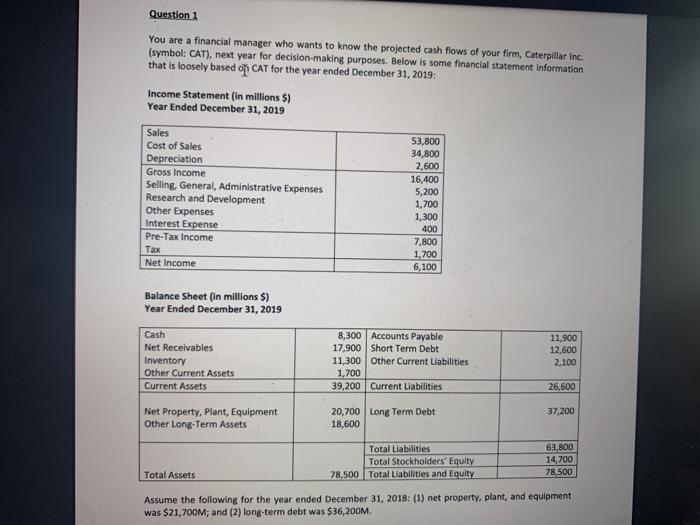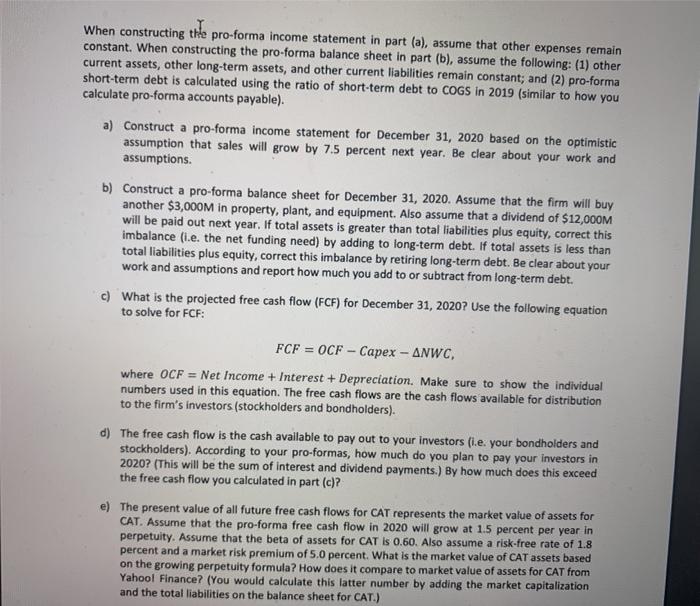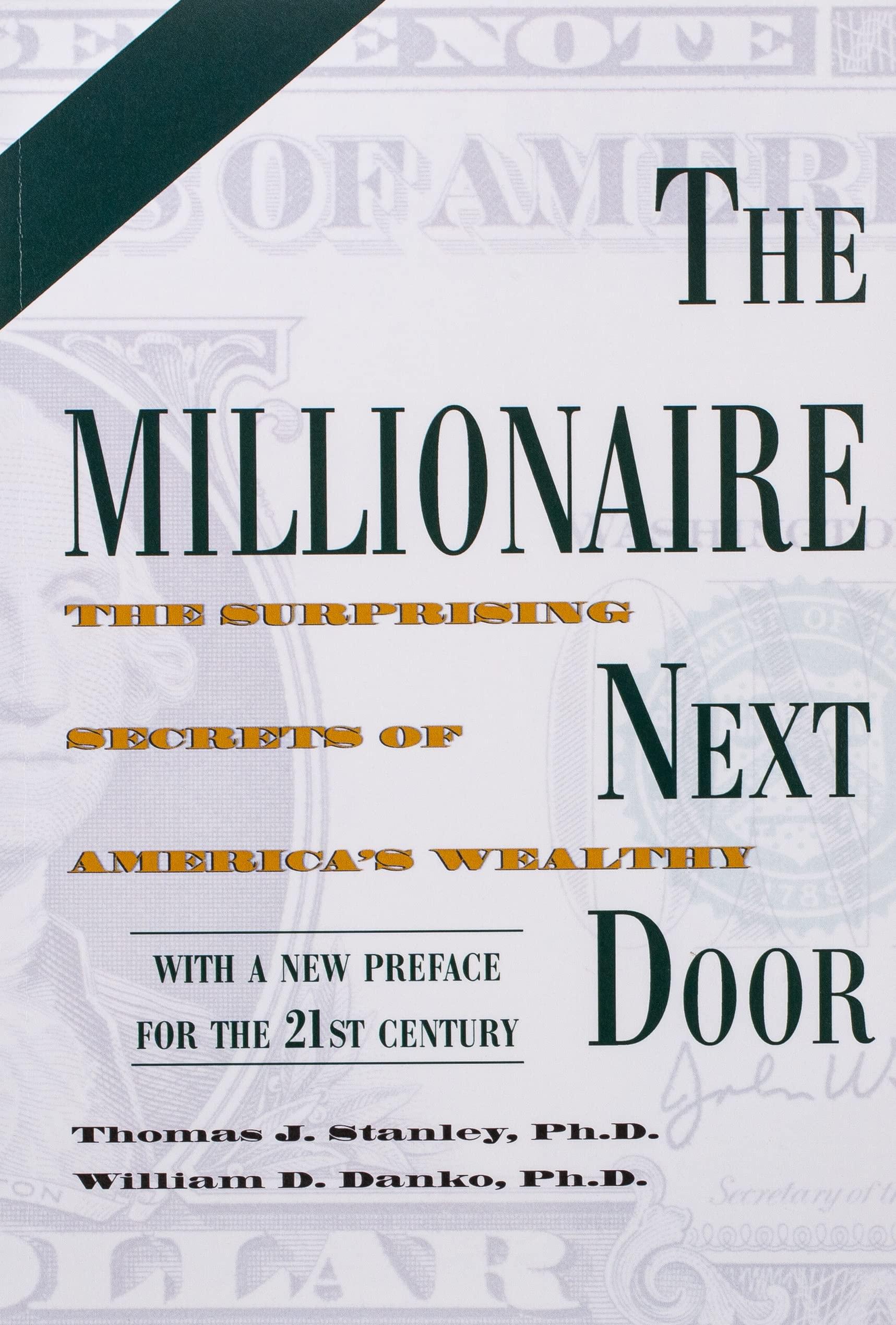Question 1 You are a financial manager who wants to know the projected cash flows of your firm, Caterpillar Inc. (symbol: CAT), next year for decision-making purposes. Below is some financial statement information that is loosely based on CAT for the year ended December 31, 2019: Income Statement (in millions $) Year Ended December 31, 2019 Sales Cost of Sales Depreciation Gross Income Selling, General, Administrative Expenses Research and Development Other Expenses Interest Expense Pre-Tax Income Tax Net Income 53,800 34,800 2,600 16,400 5,200 1,700 1,300 400 7,800 1,700 6,100 Balance Sheet (in millions $) Year Ended December 31, 2019 Cash Net Receivables Inventory Other Current Assets Current Assets Net Property, Plant, Equipment Other Long-Term Assets 8,300 Accounts Payable 17,900 Short Term Debt 11,300 Other Current Liabilities 1,700 39,200 Current Liabilities 11,900 12,600 2.100 26,600 37,200 20,700 Long Term Debt 18,600 Total Liabilities Total Stockholders' Equity 78,500 Total Liabilities and Equity 63,800 14,700 78,500 Total Assets Assume the following for the year ended December 31, 2018: (1) net property, plant, and equipment was $21,700M; and (2) long-term debt was $36,200M. When constructing the pro-forma income statement in part (a), assume that other expenses remain constant. When constructing the pro-forma balance sheet in part (b), assume the following: (1) other current assets, other long-term assets, and other current liabilities remain constant; and (2) pro-forma short-term debt is calculated using the ratio of short-term debt to COGS in 2019 (similar to how you calculate pro-forma accounts payable). a) Construct a pro-forma income statement for December 31, 2020 based on the optimistic assumption that sales will grow by 7.5 percent next year. Be clear about your work and assumptions. b) Construct a pro-forma balance sheet for December 31, 2020. Assume that the firm will buy another $3,000M in property, plant, and equipment. Also assume that a dividend of $12,000M will be paid out next year. If total assets is greater than total liabilities plus equity, correct this imbalance (i.e. the net funding need) by adding to long-term debt. If total assets is less than total liabilities plus equity, correct this imbalance by retiring long-term debt. Be clear about your work and assumptions and report how much you add to or subtract from long-term debt. c) What is the projected free cash flow (FCF) for December 31, 2020? Use the following equation to solve for FCF: FCF = OCF - Capex - ANWC, where OCF = Net Income + Interest + Depreciation. Make sure to show the individual numbers used in this equation. The free cash flows are the cash flows available for distribution to the firm's investors (stockholders and bondholders). d) The free cash flow is the cash available to pay out to your investors (i.e. your bondholders and stockholders). According to your pro-formas, how much do you plan to pay your investors in 2020? (This will be the sum of interest and dividend payments.) By how much does this exceed the free cash flow you calculated in part (c)? e) The present value of all future free cash flows for CAT represents the market value of assets for CAT. Assume that the pro-forma free cash flow in 2020 will grow at 1.5 percent per year in perpetuity. Assume that the beta of assets for CAT IS 0.60. Also assume a risk-free rate of 1.8 percent and a market risk premium of 5.0 percent. What is the market value of CAT assets based on the growing perpetuity formula? How does it compare to market value of assets for CAT from Yahool Finance? (You would calculate this latter number by adding the market capitalization and the total liabilities on the balance sheet for CAT.) Question 1 You are a financial manager who wants to know the projected cash flows of your firm, Caterpillar Inc. (symbol: CAT), next year for decision-making purposes. Below is some financial statement information that is loosely based on CAT for the year ended December 31, 2019: Income Statement (in millions $) Year Ended December 31, 2019 Sales Cost of Sales Depreciation Gross Income Selling, General, Administrative Expenses Research and Development Other Expenses Interest Expense Pre-Tax Income Tax Net Income 53,800 34,800 2,600 16,400 5,200 1,700 1,300 400 7,800 1,700 6,100 Balance Sheet (in millions $) Year Ended December 31, 2019 Cash Net Receivables Inventory Other Current Assets Current Assets Net Property, Plant, Equipment Other Long-Term Assets 8,300 Accounts Payable 17,900 Short Term Debt 11,300 Other Current Liabilities 1,700 39,200 Current Liabilities 11,900 12,600 2.100 26,600 37,200 20,700 Long Term Debt 18,600 Total Liabilities Total Stockholders' Equity 78,500 Total Liabilities and Equity 63,800 14,700 78,500 Total Assets Assume the following for the year ended December 31, 2018: (1) net property, plant, and equipment was $21,700M; and (2) long-term debt was $36,200M. When constructing the pro-forma income statement in part (a), assume that other expenses remain constant. When constructing the pro-forma balance sheet in part (b), assume the following: (1) other current assets, other long-term assets, and other current liabilities remain constant; and (2) pro-forma short-term debt is calculated using the ratio of short-term debt to COGS in 2019 (similar to how you calculate pro-forma accounts payable). a) Construct a pro-forma income statement for December 31, 2020 based on the optimistic assumption that sales will grow by 7.5 percent next year. Be clear about your work and assumptions. b) Construct a pro-forma balance sheet for December 31, 2020. Assume that the firm will buy another $3,000M in property, plant, and equipment. Also assume that a dividend of $12,000M will be paid out next year. If total assets is greater than total liabilities plus equity, correct this imbalance (i.e. the net funding need) by adding to long-term debt. If total assets is less than total liabilities plus equity, correct this imbalance by retiring long-term debt. Be clear about your work and assumptions and report how much you add to or subtract from long-term debt. c) What is the projected free cash flow (FCF) for December 31, 2020? Use the following equation to solve for FCF: FCF = OCF - Capex - ANWC, where OCF = Net Income + Interest + Depreciation. Make sure to show the individual numbers used in this equation. The free cash flows are the cash flows available for distribution to the firm's investors (stockholders and bondholders). d) The free cash flow is the cash available to pay out to your investors (i.e. your bondholders and stockholders). According to your pro-formas, how much do you plan to pay your investors in 2020? (This will be the sum of interest and dividend payments.) By how much does this exceed the free cash flow you calculated in part (c)? e) The present value of all future free cash flows for CAT represents the market value of assets for CAT. Assume that the pro-forma free cash flow in 2020 will grow at 1.5 percent per year in perpetuity. Assume that the beta of assets for CAT IS 0.60. Also assume a risk-free rate of 1.8 percent and a market risk premium of 5.0 percent. What is the market value of CAT assets based on the growing perpetuity formula? How does it compare to market value of assets for CAT from Yahool Finance? (You would calculate this latter number by adding the market capitalization and the total liabilities on the balance sheet for CAT.)








